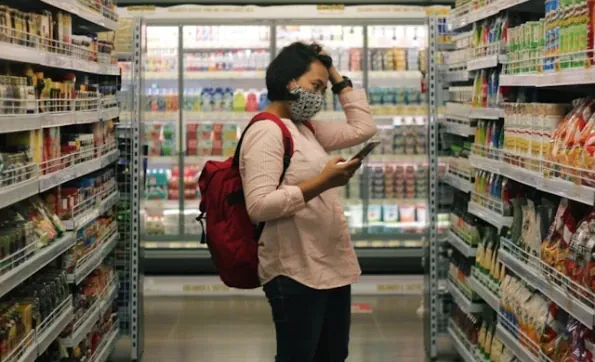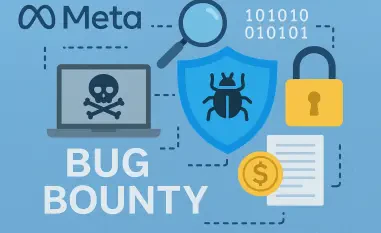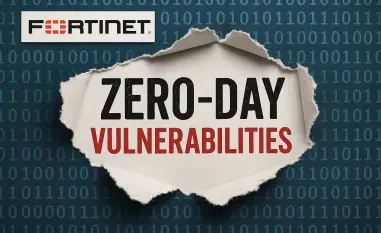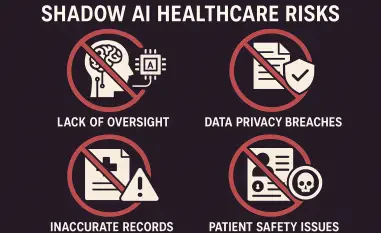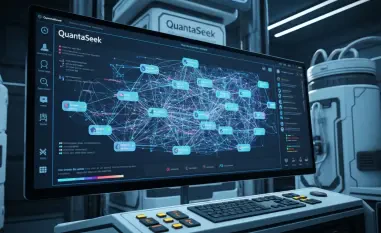In recent years, the agrifood industry has become increasingly digitized, making it a prime target for cyberattacks that can have far-reaching consequences, disrupting food supply chains and threatening consumer welfare. A recent cyberattack on Ahold Delhaize USA, which affected over 2,000 grocery stores, highlights the vulnerability of the food supply chain to such threats. This incident is a stark reminder of the need for heightened cybersecurity measures across the agrifood sector to ensure the integrity and security of our food supply.
The Ahold Delhaize USA Cyberattack
In early November, Ahold Delhaize USA experienced a significant cyberattack that disrupted operations across its grocery stores, including Hannaford, Food Lion, and Stop & Shop. The attack led to empty shelves, delayed prescriptions, and issues with credit and debit card transactions. Online ordering systems were also taken offline, and Hannaford’s website remained inoperative for several days. These disruptions in the New England area showcased the broad impact of cyberattacks on everyday consumer functions and food availability.
The extent of the disruption due to the attack on Ahold Delhaize USA underlines how deeply integrated and vulnerable the digital infrastructure of modern grocery stores has become. For many consumers, this incident revealed how dependent their everyday lives are on these systems functioning smoothly. Empty shelves and delayed prescriptions are not just minor inconveniences; they can pose significant challenges, particularly for those relying on these services for essential supplies and medication. Furthermore, the inability to process credit or debit card transactions stressed both consumers and store operations, further amplifying the chaos caused by the attack.
The Growing Importance of Cybersecurity in the Agrifood Industry
As the agrifood industry becomes more digitized, the importance of cybersecurity has grown. Smart farming technologies, which are increasingly used in the agricultural process, are vulnerable to cyberattacks. An attack could disrupt systems that monitor food temperature during production, potentially leading to contamination. The interconnected nature of the food supply chain means that a cyberattack on a single small company can cause a ripple effect, impacting multiple stages of the agricultural process.
The digitization of the agrifood industry provides numerous benefits, such as improved efficiency and productivity, but it also introduces significant cybersecurity risks. Many agrifood operations now rely on interconnected devices and data systems, from smart tractors and drones to sophisticated supply chain management software. While these technologies enhance operations, they also create new vulnerabilities. A single targeted cyberattack could compromise the entire system, disrupting the growing, harvesting, processing, and distribution of food products. The potential for an attack to cause widespread contamination further emphasizes the critical need for robust cybersecurity measures within the agrifood industry.
The Ripple Effect of Cyberattacks on the Food Supply Chain
Agrifood companies often rely heavily on third-party vendors, which amplifies the risks from cyber threats. The Farm to Table Ransomware Report by Food Ag ISAC notes that ransomware attacks can impact not only the direct victims but also their suppliers or partners, causing cascading effects throughout the industry. For example, a cyberattack on a transportation vendor could stall food deliveries, resulting in empty grocery store shelves and delayed shipments. Attacks on suppliers, distributors, or logistics providers can delay product deliveries, creating shortages and possibly introducing counterfeit goods.
The intertwined nature of the food supply chain means that each link in the chain, from production to distribution to retail, is dependent on the smooth operation of others. An attack on a single company can have a domino effect, disrupting entire networks of suppliers and partners. These cascading disruptions result in more than just logistical headaches; they can significantly impact food availability, leading to shortages and price hikes for consumers. Additionally, delays and disruptions can create opportunities for counterfeit or substandard goods to enter the supply chain, posing serious risks to consumer safety and trust.
Notable Cyberattacks in the Agrifood Sector
Several notable cyberattacks have highlighted the vulnerabilities within the agrifood sector. In October 2021, Schreiber Foods, a milk processing company, faced a ransomware attack that halted the entire milk supply due to disrupted digital processes. Milk deliveries resumed after five days, but not without significant disturbances in the supply chain. Another significant case was the 2021 ransomware attack on JBS, the world’s largest meat-packing company. The attack led to temporary meat shortages and increased prices. Russian hacker group Revil targeted JBS, disrupting operations at 47 Australian and nine U.S. locations for several days, and JBS paid an $11 million ransom.
These incidents underscore the vast and immediate impacts that cyberattacks can have on the agrifood sector. The Schreiber Foods attack, by halting milk delivery for five days, demonstrated how a single point of failure could create significant supply chain disturbances, affecting both producers and consumers. The JBS ransomware attack, meanwhile, illustrated the scale at which cybercriminals could operate, targeting major global players and resulting in substantial financial losses, operational disruptions, and increased consumer prices. These examples highlight the necessity for comprehensive cybersecurity strategies to protect critical sectors like food production from malicious actors.
Legislative Responses to Cyber Threats in the Agrifood Industry
In response to the increasing frequency and severity of cyber threats, the Farm and Food Cybersecurity Act is under consideration in both the U.S. House and Senate. This act mandates the secretary of agriculture to conduct biennial studies on cybersecurity threats and vulnerabilities in the agriculture and food sectors. Additionally, the secretary of agriculture will collaborate with other agencies to conduct an annual cross-sector crisis simulation exercise addressing food-related cyber emergencies or disruptions. Rep. Elissa Slotkin emphasizes the critical linkage between food security and national security, highlighting the need for heightened cybersecurity measures to protect the agrifood sector from threats, especially from foreign adversaries.
The proposed legislation represents a crucial step towards fortifying the agrifood sector against cyber threats. By requiring regular studies and crisis simulation exercises, the Farm and Food Cybersecurity Act aims to enhance preparedness and response capabilities across the industry. These efforts will be essential for identifying vulnerabilities, improving resilience, and ensuring that the agrifood sector can swiftly recover from cyber incidents. Representative Slotkin’s emphasis on the connection between food security and national security highlights the broader implications of protecting agricultural systems, stressing that cyber threats in this domain pose significant risks not only to food availability but also to national stability and security.
Practical Measures for Improving Cybersecurity in the Agrifood Sector
Recognizing the critical importance of cybersecurity in the agrifood industry, the Cybersecurity and Infrastructure Security Agency (CISA) has published a Food and Agriculture Cybersecurity Checklist. This checklist serves as a guide for agrifood companies to enhance their cybersecurity measures through practical steps such as using strong passwords, enabling multi-factor authentication, recognizing and reporting phishing, updating software, employing cybersecurity tools, backing up data, and developing comprehensive incident response and recovery plans. CISA also encourages reporting cybersecurity incidents to their website to facilitate coordinated responses and mitigations.
The CISA checklist offers actionable steps that agrifood companies can implement to bolster their cybersecurity defenses. Simple measures, such as using strong passwords and enabling multi-factor authentication, can significantly reduce the risk of unauthorized access. Regularly updating software and staying vigilant against phishing attacks are also critical practices for maintaining security integrity. Additionally, having robust incident response and recovery plans in place ensures that companies are prepared to quickly and effectively address and mitigate the impact of cyber incidents. Reporting cybersecurity incidents to CISA helps to create a coordinated response framework, further enhancing the collective security posture of the agrifood industry.
The Urgent Need for Proactive Cybersecurity Measures
In recent years, the agrifood industry has increasingly embraced digitization, becoming a prime target for cyberattacks that can wreak havoc, disrupting food supply chains and posing risks to consumer welfare. A notable example of this is the recent cyberattack on Ahold Delhaize USA, impacting over 2,000 grocery stores and underscoring the vulnerability of our food supply chain to cybersecurity threats. This incident serves as a stark reminder of the critical need for heightened cybersecurity measures throughout the agrifood sector. Protecting the integrity and security of our food supply is essential to prevent future disruptions that could have significant repercussions for consumers and businesses alike. In light of these growing threats, there is an urgent need for all stakeholders in the agrifood industry, from farmers to retailers, to adopt robust cybersecurity protocols. By doing so, we can ensure a secure food supply chain and safeguard public confidence in the availability and safety of our food products.
